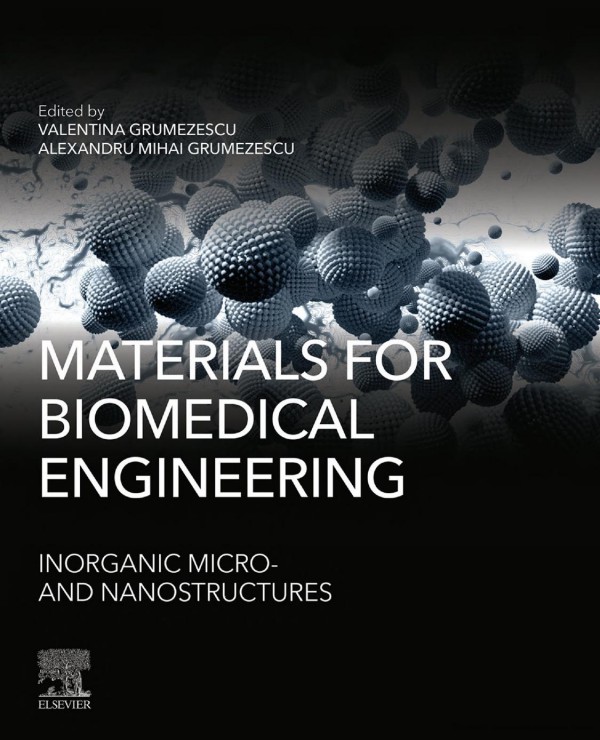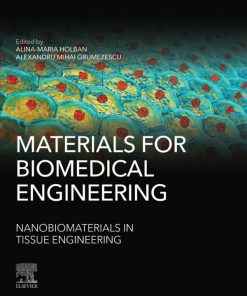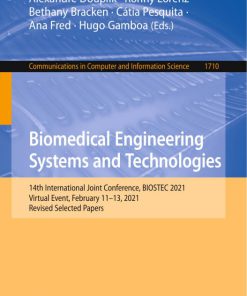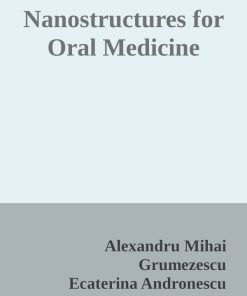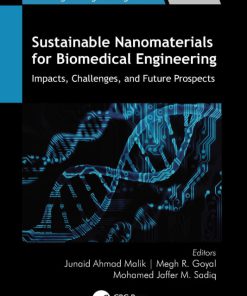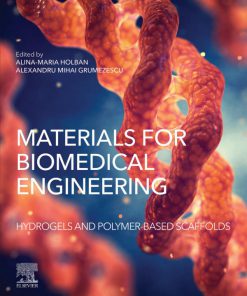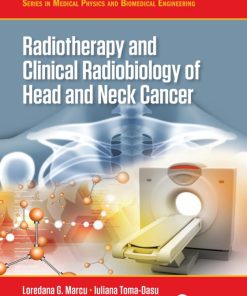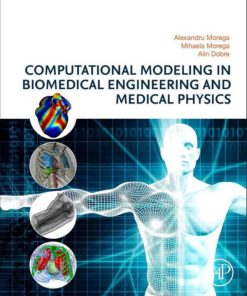(Ebook PDF) Materials for Biomedical Engineering Inorganic Micro and Nanostructures 1st edition by Alexandru Grumezescu 0081028156 9780081028155 full chapters
$50.00 Original price was: $50.00.$25.00Current price is: $25.00.
Authors:Valentina Grumezescu , Series:Biomedical [123] , Author sort:Grumezescu, Valentina , Languages:Languages:eng , Published:Published:Jun 2019 , Publisher:Elsevier
Materials for Biomedical Engineering: Inorganic Micro and Nanostructures 1st edition by Alexandru Grumezescu – Ebook PDF Instant Download/DeliveryISBN: 0081028156, 9780081028155
Full download Materials for Biomedical Engineering: Inorganic Micro and Nanostructures 1st edition after payment.
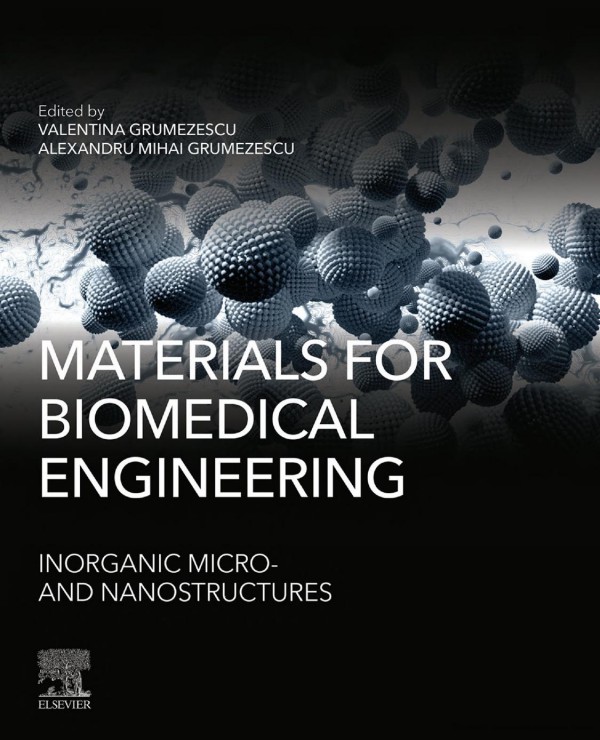
Product details:
ISBN-10 : 0081028156
ISBN-13 : 9780081028155
Author : Alexandru Grumezescu
Materials for Biomedical Engineering: Inorganic Micro- and Nanostructures presents recent, specific insights in new progress, along with new perspectives for inorganic micro- and nano-particles. The main focus of this book is on biomedical applications of these materials and how their biological properties are linked to various synthesis methods and their source of raw materials. Recent information regarding optimized synthesis methods to obtain improved nano- and microparticles for biomedical use, as well as the most important biomedical applications of these materials, such as the diagnosis and therapy of cancer, are highlighted in detail.
Materials for Biomedical Engineering: Inorganic Micro and Nanostructures 1st Table of contents:
Chapter 1. Biomedical inorganic nanoparticles: preparation, properties, and perspectives
Abstract
1.1 Introduction
1.2 Gold Nanoparticles
1.3 Silver Nanoparticles
1.4 Selenium Nanoparticles
1.5 Copper Nanoparticles
1.6 Iron Nanoparticles
1.7 Zinc Oxide Nanoparticles
1.8 Hydroxyapatite Nanoparticles
1.9 Conclusions
Acknowledgments
References
Further Reading
Chapter 2. Inorganic composites in biomedical engineering
Abstract
2.1 Introduction and Background
2.2 Categorization
2.3 Components
2.4 Preparation of Composites
2.5 Properties of Composites
2.6 Anomalies
2.7 Biological Response
2.8 Applications in Biomedical Engineering
2.9 Conclusions
References
Further Reading
Chapter 3. Structural interpretation, microstructure characterization, mechanical properties, and cytocompatibility study of pure and doped carbonated nanocrystalline hydroxyapatites synthesized by mechanical alloying
Abstract
3.1 Introduction
3.2 Materials and Methods
3.3 Results and Discussions
3.4 Conclusions
References
Chapter 4. Multiparticle composites based on nanostructurized arsenic sulfides As4S4 in biomedical engineering
Abstract
4.1 Introduction
4.2 As4S4/ZnS NC Preparation Procedure
4.3 As4S4/ZnS NC Characterization Methodology
4.4 NP-Guided Functionality in As4S4/ZnS NCs
4.5 Conclusions
References
Chapter 5. Quaternary ammonium compound derivatives for biomedical applications
Abstract
5.1 Background
5.2 Biofilm Treatment and Prevention
5.3 Quaternary Ammonium Compounds and Their Chemistry
5.4 Variables Influencing the Antimicrobial Properties of Quaternary Ammonium Compound
5.5 Cytotoxicity
5.6 Antimicrobial Resistance
5.7 Remarks
References
Chapter 6. Block copolymer micelles as nanoreactors for the synthesis of gold nanoparticles
Abstract
6.1 Introduction
6.2 Biomedical Applications
6.3 Study Results
6.4 Future Perspectives
References
Further Reading
Chapter 7. Nanoparticles: synthesis and applications
Abstract
Acknowledgment
7.1 Introduction
7.2 Synthesis of Nanoparticles
7.3 Functionalization/Coating of Nanoparticles
7.4 Applications
7.5 Conclusion and Perspectives
References
Chapter 8. Multimodal magnetic nanoparticles for biomedical applications: importance of characterization on biomimetic in vitro models
Abstract
8.1 Introduction
8.2 Characterization of Multimodal Magnetic Nanoparticles
8.3 Current Biomedical Applications of Multimodal Magnetic Nanoparticles
8.4 Endocytosis and Intracellular Fate of Multimodal Magnetic Nanoparticles
8.5 In Vivo and In Vitro Models (Classical Cell Cultures, Biomimetic) for Testing Nanoparticle Toxicity and Their Penetration Through Cell Plasma Membranes and Tissue Barriers
8.6 Advantages, Perspectives, and Limitations of Biomimetic In Vitro Models Versus Classical Cell Cultures
8.7 Conclusions
Acknowledgments
References
Chapter 9. Aluminosilicate-based composites functionalized with cationic materials: possibilities for drug-delivery applications
Abstract
9.1 Introduction
9.2 Aluminosilicates as Drug Carriers—Properties, Advantages, and Limitations
9.3 Aluminosilicate-Based Drug Carriers Functionalized With Cationic Surfactants
9.4 Chitosan-Functionalized Aluminosilicates as Drug Carriers
9.5 Conclusions
Acknowledgment
References
Chapter 10. Bioactive glass nanofibers for tissue engineering
Abstract
10.1 Introduction
10.2 Conventional Methods to Produce Glass Microfibers
10.3 Methods to Produce Glass Nanofibers
10.4 Bioactive Glass Fibers for Tissue Engineering and Composites
10.5 Production of Glass Nanofibers by Laser Spinning Technique
10.6 Summary and Outlook
Acknowledgment
References
Chapter 11. Application of (mixed) metal oxides-based nanocomposites for biosensors
Abstract
11.1 Introduction
11.2 Sensors and Biosensors
11.3 Application of Sensors
11.4 Fabrication
11.5 Selectivity, Sensitivity, and Time Factors
11.6 Summary and Recommendations for Future Work
References
Further Reading
Chapter 12. Metal nanoparticles and their composites: a promising multifunctional nanomaterial for biomedical and related applications
Abstract
12.1 Introduction
12.2 Some Interesting Properties of the Metals on the Nanometer Length Scale
12.3 Nanoparticle Synthesis and Functionalization
12.4 Applications of Metal Nanoparticles and Their Polymer-Based Nanocomposites
12.5 Conclusions and Outlook
Acknowledgments
References
Chapter 13. Hybrid metal complex nanocomposites for targeted cancer diagnosis and therapeutics
Abstract
13.1 Introduction
13.2 Conventional Chemotherapy
13.3 Striving Toward Targeted Chemotherapy
13.4 Metal–Ligand Complexes as a Composite Anticancer Drug
13.5 Hybrid Metal Salen–Polymer Nanocomposites as Nano-DDS
13.6 Conclusion
References
Chapter 14. Nanocoatings and thin films
Abstract
14.1 Introduction
14.2 Nanocoating Fabrication Methods
14.3 Conclusion
People also search for Materials for Biomedical Engineering: Inorganic Micro and Nanostructures 1st:
materials for biomedical engineering thermoset and thermoplastic polymers
materials for biomedical engineering abbreviation
materials for biomedical engineering fundamentals and applications pdf
materials for biomedical engineering pdf
engineering materials for biomedical applications

